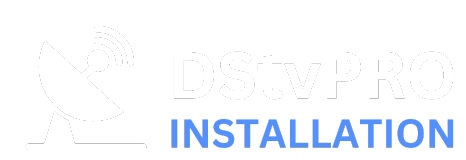Introduction
DStv is a popular satellite television service that provides viewers with a wide range of channels, including local and international programs. With its high-quality picture and sound, DStv has become a favorite among households and businesses alike. However, to enjoy uninterrupted viewing experience, it’s crucial to check the signal strength regularly.
| Aspect | Details |
|---|---|
| Why Signal Strength Matters | Essential for clear picture and sound; prevents interruptions and enhances overall viewing experience. |
| Checking Signal Strength | Regular checks via DStv decoder settings can preempt issues. Important to monitor both signal quality and strength. |
| Common Causes of Signal Issues | Weather, obstructions (like trees/buildings), equipment malfunction, and dish alignment. |
| Initial Troubleshooting Steps | Inspect cable connections, adjust satellite dish alignment, and ensure equipment is up-to-date. |
| When to Call a Professional | Recommended if basic troubleshooting doesn’t resolve the issue or for advanced solutions like dish resizing. |
| Advanced Improvement Techniques | Consider a larger dish for better signal capture, or a booster amplifier for signal amplification. |
| Preventive Measures | Regular maintenance of equipment and staying informed about weather or other potential disruptions. |
| Staying Technologically Updated | Keep abreast of new advancements in satellite technology and signal optimization methods. |
What is DStv?
DStv is a subscription-based satellite television service owned by MultiChoice. It provides viewers with access to hundreds of local and international channels covering various genres such as sports, news, movies, music and more. Viewers can choose their preferred package depending on their preferences.
Why it’s Important to Check Signal Strength
Signal strength refers to the level of the satellite signal received by your decoder or set-top box. A weak signal can result in poor picture quality, sound distortion or total loss of signal. Checking your DStv’s signal strength regularly ensures that you identify issues before they become severe enough to interrupt your viewing experience.
Critical for Ensuring Uninterrupted Viewing Experience
There’s nothing more frustrating than settling down for an evening of entertainment only to experience frequent glitches or interruptions due to poor signal strength. By checking your DStv’s signal strength regularly, you can ensure that you enjoy uninterrupted viewing experience every time you watch TV. In the next section, we’ll take an in-depth look at what signal strength is and how it affects your viewing experience on DStv.
Understanding Signal Strength
What is Signal Strength and How it Affects Your Viewing Experience?
Signal strength refers to the quality of the signal transmitted from the satellite to your DStv decoder. It is measured in decibels (dB) and ranges from 0 to 100. The higher the signal strength, the better your viewing experience will be.
When you have a weak or poor signal, you may notice interruptions or freeze-frames while watching your favorite show. The impact of low signal strength on your viewing experience is noticeable in several ways.
The image quality may degrade, resulting in pixelation, blurred pictures, or loss of sound quality. If left unaddressed, a weak signal may cause total loss of reception.
Factors that Can Affect Signal Strength
Several factors can affect the signal strength of your DStv decoder. These factors include weather conditions, physical obstructions such as trees or buildings, equipment malfunction, and satellite alignment.
Weather conditions such as heavy rain or thunderstorms can interfere with satellite signals and reduce their strength considerably. Physical obstructions like tall buildings or trees can block satellite signals from reaching your DStv dish leading to reduced signal strength.
Equipment malfunctioning due to outdated equipment like an old LNB (low noise block converter) could cause a weak signal. Satellite alignment is vital when installing a new dish; if not correctly aligned during installation, it could lead to low-quality signals even when there are no physical obstructions nearby.
Understanding signal strength and how it affects viewing experience is vital for any DStv user because having an uninterrupted viewing experience while watching TV shows enhances overall television satisfaction. Understanding what causes low signals is important as well because it helps users know what they need to avoid doing to maintain good signals necessary for great television experiences while using their decoders.
Checking Signal Strength on Your DStv Decoder
When it comes to checking signal strength on your DStv decoder, the first thing you need to do is turn on your TV and decoder and make sure they are connected properly. Then, using your remote control, follow these steps:
- Press the “Menu” button on your remote control 2. Use the arrow keys to navigate to “Settings”
- Select “Satellite Settings” from the list of options 4. Choose “Signal Strength” and press “OK”
Once you have selected signal strength, you will see a bar graph that shows both signal quality and signal strength. It is important to check both as they can affect your viewing experience differently.
How to Find DSTV Signal Using Phone
This video in HINDI only! For english speakers, please mute, switch on Youtube captions “CC” and turn on auto translate to “English” in the settings ⚙️ (small gear icon) .
Importance of Checking Both Signal Quality and Signal Strength
Signal quality measures how strong the received signal is compared to potential interference while signal strength measures how much power is in the received signal. Checking both indicators enables you to determine if there are any problems with your connection that need troubleshooting or fixing. If the signal quality is poor, then there may be an obstruction or problem with the dish alignment, cable connections or weather conditions that would cause interference with reception of signals from satellites.
In addition, if there is weak or no signal strength indicated then this may indicate a fault with equipment such as cables or satellite dish. Therefore it’s important to check both indicators so that any issues can be addressed quickly before they lead up to bigger problems such as missing out on favorite channels due to poor reception which could ruin one’s viewing experience over time.
Troubleshooting Signal Issues
When the signal strength is low or poor, what can you do?
Sometimes, despite our best efforts, the DStv signal strength may be low or poor. This can happen due to various reasons such as bad weather conditions, physical obstructions like trees or buildings, equipment malfunction, etc. But before calling a technician for help, there are some basic steps you can take to troubleshoot the problem.
The first and foremost step is to check the connections between your decoder and satellite dish. Ensure that the cables are tightly connected and not damaged in any way.
Damaged cables can cause interference with signals and result in poor picture quality or no picture at all. Another common issue related to low signal strength is misalignment of your satellite dish.
For detailed instructions on aligning your satellite dish, refer to “Satellite Dish Alignment”. The process for adjusting the alignment of your satellite dish depends on the type of dish you have installed but most dishes come with instructions for doing this.
Before calling a technician, you might want to try some additional troubleshooting steps found in “How to Fix DStv Signal Problem”. A technician will be able to diagnose the problem more accurately and provide a solution that’s tailored to your specific situation.
Checking DStv’s signal strength regularly will help ensure uninterrupted viewing experience but sometimes problems arise due to various reasons mentioned above. By checking connections between decoder & satellite dish and adjusting alignment of your dish if necessary we can fix common problems related to low or poor signal strength but if those troubleshooting tips don’t work then calling a technician may be necessary for further assistance.
Advanced Tips for Improving Signal Strength
The Quest for Stronger Signals
While adjusting your satellite dish alignment and replacing faulty cables can often fix issues related to low or poor signal strength, sometimes more advanced methods are necessary. Here are some advanced tips for improving your DStv’s signal strength that you may want to consider:
Using a Larger Dish
One of the most effective ways to improve your DStv’s signal strength is by using a larger dish. The larger the dish, the better it can capture and reflect signals from the satellite. However, before purchasing a bigger dish, make sure to check with your service provider what size of dish would be suitable for your location and package.
Installing a Booster Amplifier
Another option is installing a booster amplifier in your system. These devices amplify weak signals and help improve signal quality.
However, it’s important to note that booster amplifiers must be used correctly or they can actually worsen signal quality instead of improving it. It’s recommended to consult with an expert before installing one.
Warning Against Attempting Advanced Methods Alone
While these advanced tips can be helpful in improving signal strength, it’s crucially important to seek professional assistance unless you have proper knowledge on how they work. Attempting such solutions alone without adequate knowledge or equipment may cause more significant damage than good.
Checking and maintaining strong signal strength is crucial for an uninterrupted viewing experience on DStv. By understanding what affects signal strength, checking regularly its quality and taking appropriate measures such as those highlighted above, viewers can significantly improve their viewing experience even during unfavorable conditions like weather disruptions or physical obstructions!
Conclusion
Regular Checks Ensure a Great Viewing Experience
As mentioned earlier, checking your DStv’s signal strength regularly is essential in ensuring that you have a great viewing experience. Even the slightest drop in signal strength can cause interruptions, and no one wants to miss their favorite show because of poor signal quality. Regularly checking your signal strength allows you to identify any issues before they become major problems.
Don’t Hesitate to Call for Professional Assistance
While troubleshooting common issues related to low or poor signal strength can be done by following simple steps such as adjusting satellite dish alignment or replacing faulty cables, sometimes the issues are more complex. In such instances, it’s essential to call a technician for assistance immediately. Attempting advanced tips for improving your DStv’s signal strength without proper knowledge or assistance from a professional may cause more harm than good.
Stay Up-to-Date with New Technologies and Techniques
As technology continues to advance, new techniques and technologies emerge for improving your DStv’s signal strength. It’s imperative that you stay up-to-date with these advancements by reading up on new articles like this one or subscribing to newsletters from DStv experts.
This way, you’ll be able to take advantage of the latest tools and techniques available on the market. Checking your DStv’s signal strength regularly is crucial in ensuring uninterrupted viewing experience.
Troubleshooting common issues related to low or poor signal strength can be done by following simple steps such as adjusting alignment or replacing faulty cables; however, sometimes problems are more complex and require professional assistance. Always stay up-to-date with new technologies and techniques by reading up on articles like this one so that you can take advantage of the latest tools available on the market today!
To scan your DStv signal, press the ‘Menu’ button on your remote, navigate to ‘Settings,’ then ‘Satellite Settings,’ and select ‘Signal Strength.’ This displays a bar graph indicating your signal quality and strength.
FAQ
How to do a signal test on my DStv explora?
On your DStv Explora, press the ‘DStv’ button on the remote, go to ‘Settings,’ select ‘System Settings,’ then ‘Signal Strength.’ Follow the on-screen instructions for the signal test.
Why is my DStv showing no signal?
To troubleshoot a ‘no signal’ issue, see “DStv No Signal E48-32 Error” for more information. Check for any visible issues and adjust your dish if needed.
Where is the satellite position for DStv?
The satellite position for DStv is typically towards the east, but the exact angle depends on your location. Refer to DStv’s installation guide or consult a professional for precise alignment.
How do I know if my DStv LNB is faulty?
For steps on fixing a faulty LNB, check out “How to Fix DStv LNB Cable”. Check for physical damage or corrosion on the LNB and consider replacing it if these symptoms persist.
Why is my DStv remote not sending signal?
If your DStv remote is not sending a signal, it may be due to dead batteries, an obstructed path between the remote and decoder, or internal damage. Replace the batteries and ensure a clear path for the signal.
How do I fix unresponsive DStv decoder?
Learn the proper way to reset your decoder in this step-by-step guide: “How to Reboot Your DStv Decoder”. Unplug it from the power source, wait a few minutes, and then plug it back in. If this doesn’t work, contact DStv support.
What causes a remote to not change channels?
A remote may not change channels due to dead batteries, signal obstruction, remote or receiver damage, or a need for reprogramming. Check these elements and replace or reprogram as necessary.
How do I reset my DStv remote?
To reset your DStv remote, remove the batteries, press each button twice, reinsert the batteries, and try using the remote again. This process can clear any stuck buttons or signal issues.
How do I check my satellite signal strength?
You can check satellite signal strength through your decoder’s settings menu. Navigate to ‘Satellite Settings’ and select ‘Signal Strength’ to view the signal quality and strength.
How do I test my cable signal?
To test your cable signal, inspect the cable connections for any looseness or damage. You can also use a cable signal meter to measure the signal strength directly from the cable.
Why is my satellite dish not getting a signal?
A satellite dish may not get a signal due to obstructions, dish misalignment, bad weather, faulty LNB, or cable damage. Check for these issues and realign or replace equipment as needed.

With over a decade of experience in satellite installation, Mthunzi is a seasoned Satellite Installation Technician at DStv Pro Installation. Recognized for his meticulous attention to detail and expert knowledge in signal troubleshooting, Mthunzi has successfully completed over 1,000 installations, earning a reputation for reliability and excellence. Certified and constantly updated on the latest technology, he’s the go-to professional you can trust for a seamless DStv experience.




